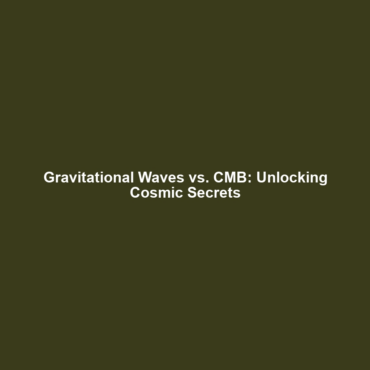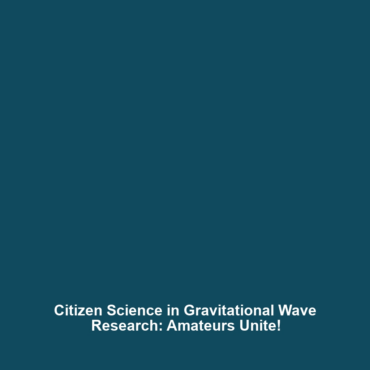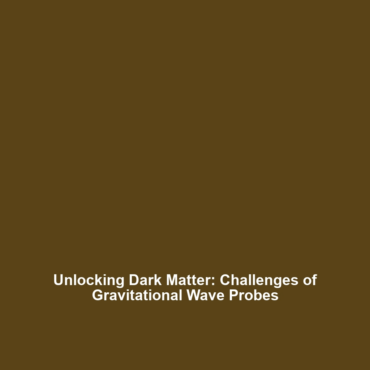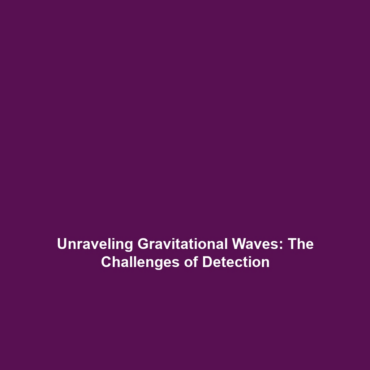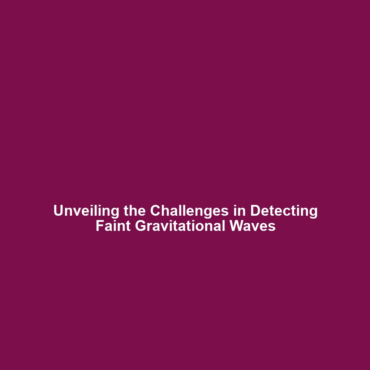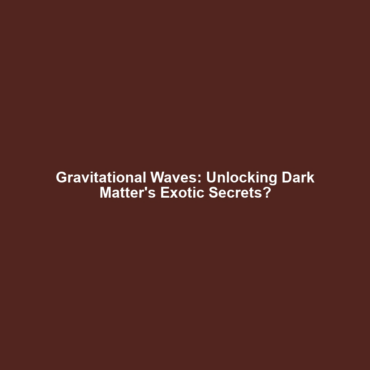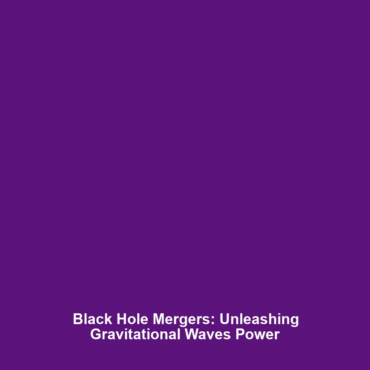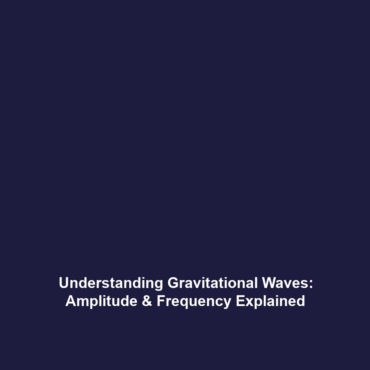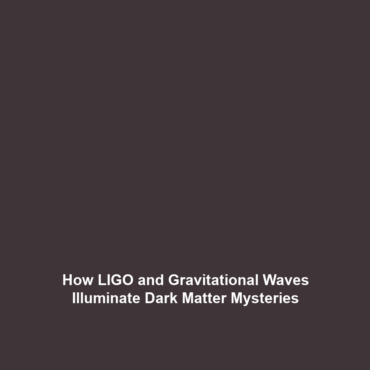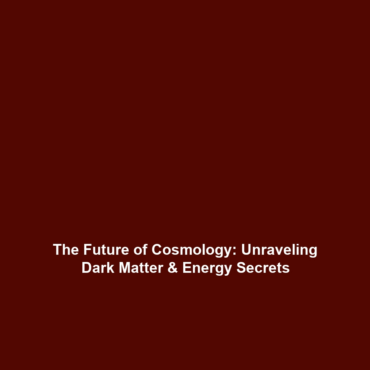Comparing Gravitational Waves to the Cosmic Microwave Background as Cosmic Messengers
Introduction
The study of the universe has long been marked by the exploration of cosmic messengers that provide insights into its fundamental nature. Among these, gravitational waves and the Cosmic Microwave Background (CMB) stand out as pivotal phenomena. Gravitational waves, ripples in spacetime caused by cataclysmic events such as merging black holes, and the CMB, the afterglow of the Big Bang, both serve as vital tools for astrophysicists to unveil the mysteries of the cosmos. This article explores the significance of comparing these two cosmic messengers and their respective contributions to our understanding of gravitational waves.
Key Concepts
Gravitational Waves
Gravitational waves are fluctuations in spacetime caused by the acceleration of massive objects. Predicted by Einstein’s general theory of relativity, they were first directly detected in 2015 by the LIGO observatory, marking a new era in observational astrophysics. These waves carry information about their origins and about the nature of gravity itself, providing insights into events that are often invisible to other forms of detection.
The Cosmic Microwave Background (CMB)
The CMB is the remnant radiation from the Big Bang, permeating the entire universe. It is crucial for understanding the early universe’s conditions and evolution. The CMB provides a snapshot of the universe when it was just 380,000 years old, allowing scientists to study the universe’s large-scale structure and properties.
Comparative Analysis
Both gravitational waves and the CMB serve unique roles in cosmic exploration. While gravitational waves offer insights into dynamic events such as mergers, the CMB provides a broader cosmological context. Understanding the interplay between these two messengers could deepen our knowledge of fundamental physics, challenging existing theories and informing new paradigms.
Applications and Real-World Uses
Comparing gravitational waves to the CMB illuminates their respective roles in cosmological research:
- Cosmic Evolution: Analyzing both phenomena helps researchers understand cosmic evolution from the Big Bang to the current universe.
- Testing Theories of Gravity: Each messenger aids in testing and refining theories of gravity, with gravitational waves providing empirical data that can validate predictions derived from the CMB.
- Astrophysical Event Understanding: Events such as supernovae and black hole mergers are better understood through the combined analysis of gravitational waves and the CMB.
Current Challenges
Despite their potential, the study of gravitational waves and CMB is fraught with challenges:
- Detection Sensitivity: The sensitivity required to detect gravitational waves is immense, often necessitating advanced technology and methods.
- Data Interpretation: Analyzing the data from both gravitational waves and the CMB correctly can be complex, with noise and other interferential factors complicating findings.
- Collaborative Efforts: Integration of findings from gravitational wave observatories and CMB studies requires collaboration across various scientific disciplines, which can be resource-intensive.
Future Research and Innovations
Future investigations into gravitational waves and the CMB hold immense promise:
- Next-Generation Detectors: Innovations in detector technology, such as space-based observatories (e.g., LISA), aim to enhance gravitational wave detection capabilities.
- Cross-Disciplinary Studies: Future research will likely develop further interdisciplinary approaches to integrate findings from gravitational waves and CMB studies.
- Quantum Gravity Insights: Investigating the relationship between these messengers could provide insights into quantum gravity phenomena and new physics.
Conclusion
In summarizing the comparison of gravitational waves to the Cosmic Microwave Background as cosmic messengers, it is evident that both play instrumental roles in our understanding of the universe. As we advance in technology and research methodologies, the synergy between these two fields may lead to groundbreaking discoveries in gravitational wave physics and cosmology. For further reading, explore our sections on gravitational waves and the Cosmic Microwave Background.
